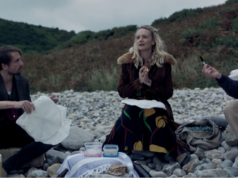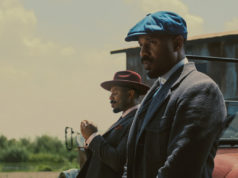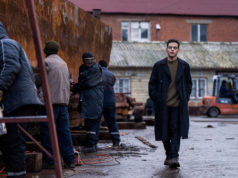A couple of decades later, Hames watched as the crown prince of Belgium and an audience of about 800 gave a standing ovation to the subjects of his documentary — surviving members of the Belgian resistance in World War II, who had pulled off operations much more daring than a faked kidnapping stunt. For the kid whose first role was as a character in The Littlest Angel, it was an awesome moment. As a boy, he acted in 35 shows at CATS and Casa Mañana, and he remembered his time at the former institution fondly. “The teachers were so encouraging,” he said. “It wasn’t just limited to theater. They were nurturing and supportive for any kind of creative pursuit.”
But he was also interested in what went on on the other side of the camera and took a CATS video class. After graduating from Arlington’s Lamar High School, Hames bounced around, studying film at UNT and learning animation and graphic design. A three-year stint at Dallas’ Westcott Communications paid the bills but made him itchy to “hit the reset button,” so he moved to Austin in 1997 and co-founded Alpheus Media , as a freelance animation firm, but with the intention of turning it into a live-action film production company. His break came soon afterward, when Alpheus was hired by the Lance Armstrong Foundation, then a small nonprofit group with a staff of eight. As the foundation grew, so did Alpheus, filming commercials and interviews with cancer survivors.
It was Alpheus’ co-founder Wilson Waggoner who led Hames to make his first feature-length documentary film Last Best Hope. Waggoner hads been approached by David Grosvenor to tell the story of his father Bill, a World War II fighter pilot from Abilene whose plane crashed in Belgium. He was sheltered from the Nazis by members of the Belgian Resistance, known as the Cométe. “I was a bit dubious about getting involved because it was such an immense story,” Hames admitted. “You could do this poorly and cheaply, and it would be acceptable. I didn’t want that. I wanted to do the Resistance story justice, not just [make] a story about a guy who crashed.”
Waggoner had already filmed footage of Bill and David Grosvenor returning to Belgium. To this Hames added extensive interviews with surviving Cométe members, World War II scholars from America and Belgium, and a script that put Bill’s story into the context of an underground movement that was being destroyed by Nazi infiltrators. His entire budget was $400,000, though Hames estimated that it would have been closer to $1.5 million had it not been for free labor put in by himself and his crew, as well as time donated by Alpheus. He completed the project last September after two years of filming.
Last Best Hope screened last year at Houston’s WorldFest and the Dallas Video Festival. (To him, the latter was a homecoming of sorts. “A lot of people from CATS were there.”) Three months ago it was also broadcast by PBS, which is also due this spring to air his next project, a miniseries about higher education in Texas. For Hames, however, none of those events compares to the screening of a rough cut of Last Best Hope in October 2005 at the Royal Aviation and Military History Museum in Brussels. The audience of 800 or so, including Belgium’s Crown Prince Philippe, gave a standing ovation to Dédée de Jong, a Resistance member interviewed in the film who is now wheelchair-bound. After the screening was over, the flinty former Cométe guide Michou Dumon (also an interview subject) approached the filmmaker with tears in her eyes and said, “Vérité.”
The filmmaker remains awed by the simple courage of these ordinary people who risked their lives for strangers. “Everyone has heard of the French Resistance, but the Belgians are so humble about what they did,” Hames said. “It was so moving to see these people be recognized.”
For more information, visit AlpheusMedia.com.











